On Monday March 2nd at 6:00pm, the BRIDGE Pop-up Storefront is hosting a book launch for three recently published books by professors from the University of Waterloo School of Architecture. Two books by Terri Meyer Book titled Diagrid Structures: Systems, Connections, Details, and Architecturally Exposed Structural Steel; along with Robert Jan van Pelt’s book Lodz and Getto Litzmannstadt: Promised Land and Croaking Hole of Europe, will be launched at the 60 Main Street storefront. Please come by and join us in celebrating the work of our professors.
The following is a description, and accompanying photos, by Terri Meyer Boake about writing Diagrid Structures.
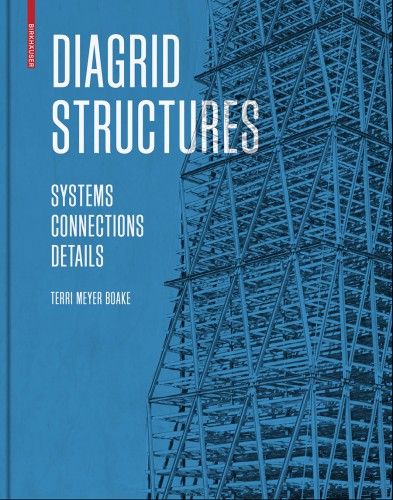
The cover of the book features The Leadenhall Building, designed by Rogers Stirk Harbour + Partners with Arup. A striking evolution of Rogers’ expertise in High Tech into a new structural model. And lovely to see the structure remain exposed and so highly featured.
WRITING THE DIAGRID
Terri Meyer Boake
When I completed my first book Understanding Steel Design: An Architectural Design Manual published by Birkhäuser late in 2011, I could not imagine having much more to say. That book represented the summation of 25 years of teaching and research, travel and photographic documentation. The short bankruptcy of Birkhäuser from March to April 2012 was a crushing blow. My book apparently sold 2,300 copies and was the top selling Birkhäuser title, but I was never to receive any royalties due to the legal circumstances. To have this happen to your first book was extremely depressing to say the least.
Yet my editor proposed to me that it was a first book and that we needed to create a series of smaller volumes on narrower or more focused topics to follow. The new owners of Birkhäuser – DeGruyter – seemed well established and they had the good sense to rehire the editorial staff of the Berlin office where my editor worked. Books are really about relationships, and my editor Andreas Müller was incredible to work with. The ratio of editors to authors there is about 1:6 which is substantially better than most publishing companies where some editors might be handling up to 30 authors or books on an annual basis. This means much personal attention during the crafting of the draft into a book, but also a large amount of freedom in setting up the content. Chapters go back and forth across the Atlantic Ocean using Microsoft Word mark up to massage the words, photos and captions into the potential for a book.
The graphic design component of a book about architecture is pretty critical, it is much different than writing a novel or a textbook. Architecture is highly visual and my method of research and documentation has arisen out of my passion for travel and photography. Images are central to my writing method. I suppose this has naturally evolved from my teaching method which has been predominantly image based. Images have served as my lecture notes or script and I always strive to have an image to illustrate each concept or fact. I suppose for me writing a book is a very formal extension of creating a lecture. The graphic designer for Understanding Steel Design, a freelancer who was also burned by the bankruptcy, was continuing to work with my editor and so also would create the subsequent books. So the understandings and working style established in the first book could be refined and flow into the creation of subsequent volumes.
I had written one chapter in Understanding Steel on the diagrid typology. As a structural type it is quite unusual and only began to be used in a significant way in the early 2000s with the construction of Foster’s Swiss Re tower in London. Part of my frustration in doing the initial research for Understanding Steel was the lack of anything comprehensive or definitive on the subject of diagrids. It seemed that the only information available was contained in the purely academic papers of Kyoung Sun Moon, a professor at Yale University or in the engineering of the buildings themselves. Such technical information seemed to be held pretty tightly by the engineers associated with the projects and was not well published. Engineers are not well known for publishing detailed technical information on new systems that might give advantage to their competitors!
However, not finding pre-existing information to pillage is actually a blessing when doing original research as it confirms that the research has the potential to be “first”.
One of the big challenges in undertaking writing and research is to come up with a topic that either extends an existing field in some substantial way or that is entirely new. I felt that further research into the diagrid typology held the promise of creating a new body of knowledge on a topic that was inadequately addressed, with the additional excitement of writing the first book on the topic. Down the road the publication of the first book on the topic could be important as it may be the book to which subsequent books will refer.
My approach to teaching and writing is to reference only projects that I have seen and experienced. I strongly feel that when it comes to writing about architecture, buildings and urban spaces that to do less is to provide only third hand information. I need to see and experience my subjects up close so that I can examine the details and also to procure my own images. From a purely pragmatic perspective it is more economical and dependable to be able to draw from your own images as it removes the time consuming job of image procurement and permissions. I also feel that I shoot buildings in a different way, and that my eye captures information in a way that I cannot replicate by sifting through Flickr. This was going to pose a problem with the diagrid book as the intention was to include all of the diagrid towers constructed to the time of writing the book. As I also needed to have construction photos and structural and fabrication diagrams, this would be impossible to have achieved “personally” as I had not been able to be on site for all construction nor able to travel to visit all buildings.
In the end I was pleased with the number that I was able to document in person, even if only in their finished state. Of the 26 buildings included in my timeline, I was only unable to visit the Shukhov Tower (detailed information was instead supplied by Elizabeth English as this was the focus of her PhD), two towers in Doha and two visionary towers that will never be built. In assembling my list of buildings it became apparent that Arup had engineered a large proportion of them. Having a personal connection with a colleague who is a Global Director at Arup, I was able to arrange to work in their office during Reading Week 2013 and gain access to their image and article library. They graciously supplied construction images for all of the projects with which they were involved. It was also pretty interesting to spend time in their London offices and see how they work. This also enabled the use of the Leadenhall Building as a key cover and feature as Arup supplied the engineering and I was able to take some interesting construction photos during the trip.
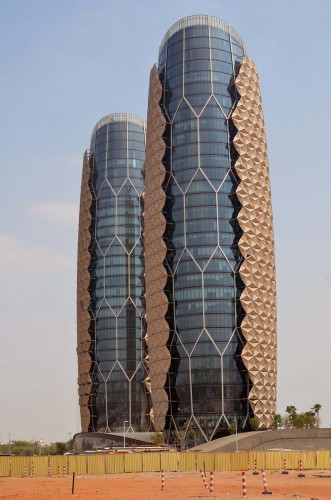
The Al Bahar Towers in Abu Dhabi, UAE are not true diagrids. I lucked into a complete tour of these during the last stages of construction and learned so much from Bryan Hamilton the site architect from Aedas and Peter Chipchase the engineer from Arup. When doing research you sometimes don’t even know the right questions to ask, but listening is very very helpful.
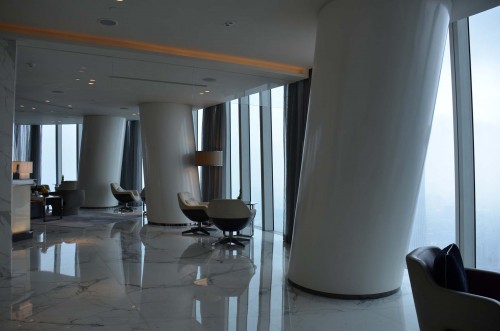
Guangzhou IFC by Wilkinson Eyre has to be one of my favorite tall buildings. It is truly smooth and very sexy. Luckily the 70th floor is a hotel lobby with restaurants so I was able to wander about to take inside photos. This can be very tough to do in the case of private buildings. I really maintain that it should not be legal to create a tall building without a bar or restaurant at the top…
The basis of my research investigation was to establish a methodology for designing a diagrid building that went well beyond the ubiquitous application of a diamond pattern to a façade or structure. The examination of the various buildings in a search for commonalities of approach and detailing led to the structuring of the chapters of the book. The simple starting point, following an examination of early forays into the construction of the new type was to dissect the most recent projects to look at the building scale and shape as this impacts module size, members, nodes and core types. Commonalities = methodology.
You really have to read the book to find out more! I don’t want to give any more spoilers.
Join us Monday March 2nd at 6:00pm at the BRIDGE Pop-Up storefront located at 60 Main St., Cambridge to celebrate the release of Terri’s books and hear more about her writing process. We will also be celebrating the release of Robert Jan van Pelt’s newest book Lodz and Getto Litzmannstadt: Promised Land and Croaking Hole of Europe. Read the excerpt for his book in this past article.
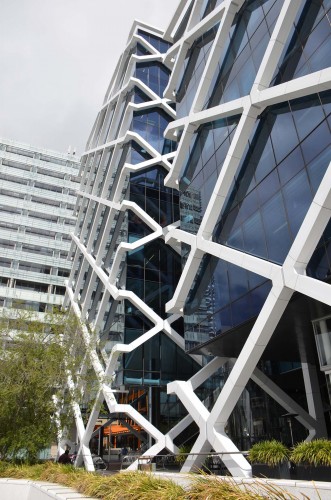
One Shelley Street in Sydney, Australia is unusual in the placement of its structure outside of the envelope. The tour of the interior was arranged by the Australian Steel Institute while I was touring Australia and New Zealand and promoting new guidelines for the design of Architecturally Exposed Structural Steel, which I helped to write.


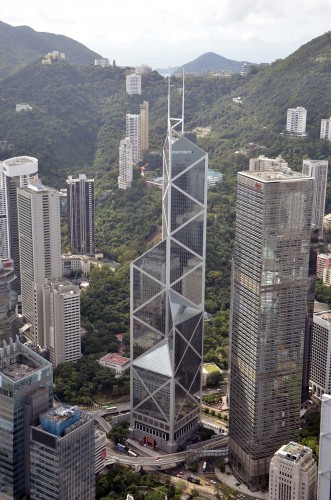

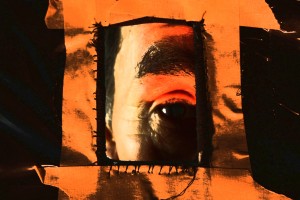
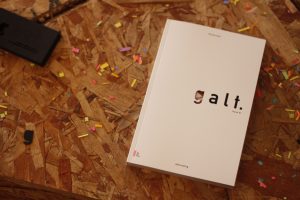
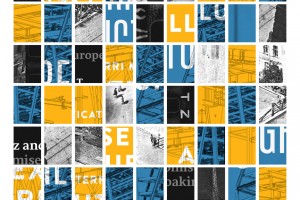
Leave a Reply